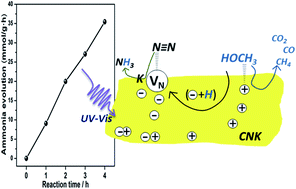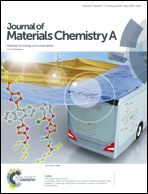Efficient photocatalytic fixation of N2 by KOH-treated g-C3N4†
Abstract
Development of N2 photofixation under mild conditions is challenging; one reason for low efficiency is the poor reactivity between water and photocatalysts. Herein, C3N4 after KOH etching was used as an efficient photocatalyst, and CH3OH was first introduced as a proton source. The photocatalyst presented a high ammonia evolution rate of 3.632 mmol g−1 h−1 and achieved an apparent quantum yield of 21.5% at ∼420 nm. In addition to the role of reacting with holes to accelerate the production and transfer of electrons, CH3OH also promoted the solubility of N2 and provided a proton to the activated N2. The CH3OH system should be instructive for a better understanding of proton-enhanced photocatalysis.



 Please wait while we load your content...
Please wait while we load your content...